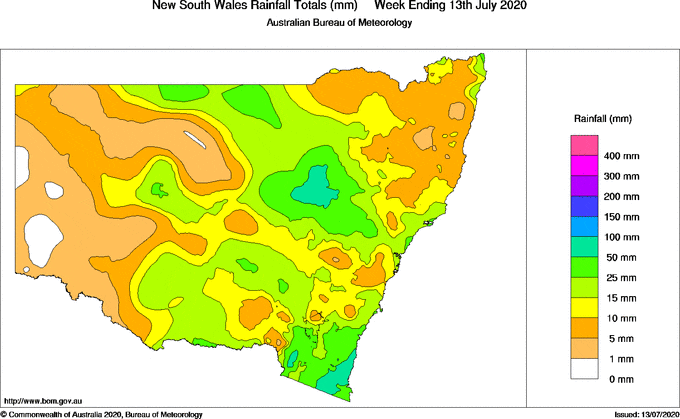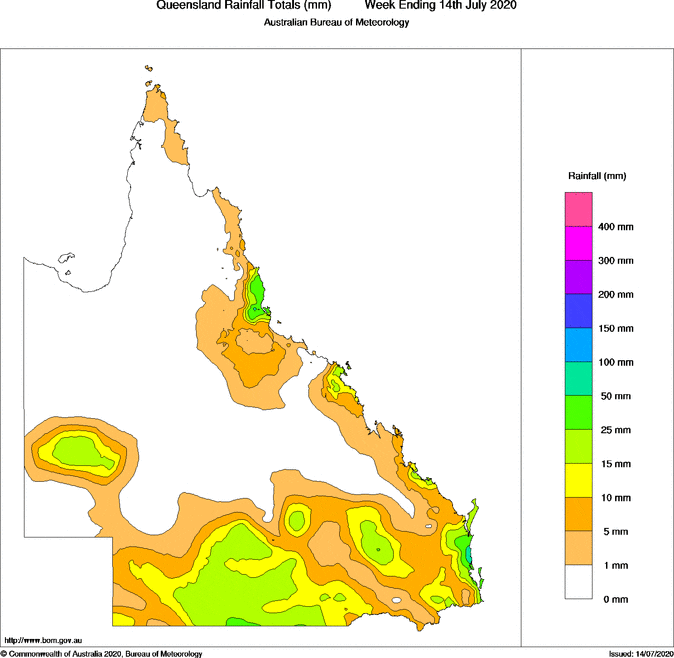WIDELY variable conditions across Australia’s winter-cropping regions have estimates from five forecasters for new-crop wheat sitting between 25.3 million tonnes (Mt) and 27.8Mt to average 26.6Mt, in line with the initial ABARES figure released last month.
While yield prospects in Victoria and all but the northern fringe of the New South Wales cropping zone remain above average to excellent, conditions in Queensland, South Australia and Western Australia range from above average to below average.
In its World Agricultural Supply and Demand Estimates (WASDE) report issued on Friday, USDA increased its forecast for Australian wheat exports by 500,000t to 17.5Mt, but left its production estimate from last month unchanged at 26Mt.
| ABARES | ACF | IKON | Lachstock | USDA | |
| Queensland | 1.4 | 1.2 (1.2) | NA | 1.4 (1.6) | NA |
| New South Wales | 8.3 | 7.8 (6.0) | NA | 8.7 (7.7) | NA |
| Victoria | 3.8 | 3.5 (3.4) | NA | 3.3 (3.3) | NA |
| South Australia | 4.5 | 4.3 (4.1) | NA | 4.4 (4.3) | NA |
| Western Australia | 8.6 | 8.6 (8.4) | NA | 9.4 (9.3) | NA |
| MAINLAND TOTAL TONNES | 26.6 | 25.3 (23.1) | 27.8 (28.5) | 27.3 (26.1) | 26.0 |
Table 1 : Forecast wheat production in Mt for mainland Australian states. Bracketed figures refer to estimates released in April at the start of planting. Source: ABARES; Australian Crop Forecasters; IKON Commodities; Lachstock Consulting, and USDA July WASDE.
Lachstock’s July estimate at 27.3Mt is down 200,000t from its June figure to reflect a cut in expected tonnage from Queensland.
“There are a few more concerns this month compared to last with the follow through rain in Queensland not forthcoming,” Lachstock said in its latest wheat supply and demand report.
“NSW remains in sound condition, but will need more rain to hold. WA continues to receive just-in-time rain in small doses to keep the crop forecast steady.
“However, this remains a major flag as we put more pressure on the spring rain coming through.”
Lachstock said timely rain in late May allowed a return to normal conditions on a weighted average basis across Western Australia.
“We know there is not a lot underneath the plant, so it needs to keep getting consistent moisture before we start to heat up in late August.
New South Wales
In north west NSW, Agromax Consulting agronomist, Greg Giblett, Tamworth, said the Liverpool Plains received between 8 and 22 millimetres of rain over three days earlier this week.
“It was less than we were expecting. We thought we’d end up with more than 25mm, but it was beautifully timed rain from the point of view that the winter crop planting is finished,” he said.

Greg Giblett
Mr Giblett said post-emergent herbicide spraying had been completed on the early-sown crops which were currently at the early to mid-tillering stage.
He said the later-sown crops planted from June 5 onwards were mainly durum wheat.
“There has been a big swing away from barley, and a big swing from bread wheat back to durum wheat. Those crops have three to four leaves and secondary roots. Things are ticking along really nicely,” he said.
In central west NSW, IMAG agronomist, Cameron Corke, Forbes, said a rain front on the weekend brought falls of 10 to 25mm to the region where farmers are enjoying a “fantastic” winter cropping season.
“It is making things a little bit wet, but it is a glorious sunny day today and everything is powering along. It is an unbelievable season. Looks fantastic. A big turnaround since January,” he said.
“I’d say 98 per cent of the crop is in. Some paddocks have wet areas that people have left, but that just reflects the wetness of the season.”

Queensland
Wheat crops in Queensland range in condition from very good to struggling, with the eastern Maranoa and pockets of Central Queensland (CQ) faring the best.
“Crops look fantastic east of town, but to the west they do not; the difference is 50mm of in-crop rain,” Nutrien Ag Solutions Roma-based agronomist Craig Miller said, adding that poorer crop might not make it to harvest.
“Ones with secondary roots down might yield 1.5t/ha, but other crops will have cattle go in on them if it doesn’t rain soon.
MCA Western Downs agronomist Ed Offner said average or better yields looked achievable for crops from roughly the Condamine district north to Miles and Dulacca.
“They’re looking very good and average or better yields seem achievable, but south of Meandarra is patchy, and so is Surat.”
Queensland cropping districts had patchy falls over the weekend, with Drillham on 22mm, Miles with 18mm and Taroom with 21mm being among the highest, but 2-10mm or zero being more common.
Some pockets of the Darling Downs, Western Downs and Maranoa have had more than 50mm of –in-crop rain, and have promising yield prospects, even with limited further rain.
CQ Ag Services senior agronomist Darren Young said the region’s crop development and prospects varied hugely.
“We’re not having a fabulous season; the later-planted crops are really suffering, and early wheat has raced away and is flowering.
“There might be a header in the paddock by the third week of August the way we’re going.
“Around Dysart isn’t too bad, and Gindie and Springsure south of Emerald are better, but Clermont and Kilcummin were planted earlier, and they’re not great.”
The harvest in southern Queensland is expected to start in October.

South Australia
CropSmart sales agronomist Daniel Bowey said dry was of concern on the Upper Eyre Peninsula.
“Some pockets aren’t too bad, but in general it’s very dry,” he said.
In the week to 9am today, most of SA’s cropping regions received 5-15 millimetres of rain.
Had some time, 15-20mm average, put a bit more hope. Sowing happened at the right time, 15-20mm biggest since seeding.

Daniel Bowey
“Some isolated pockets got a bit more rain than that, but it’s really hand to mouth, and there’s no subsoil moisture.
“We’d need above-average rain for the rest of the growing season to get average yields.”
The Lower Eyre Peninsula, Yorke Peninsula, Lower and Mid North, Murray-Mallee and South East are all seen as having above-average yield potential if the pattern of regular rain continues well into spring.
YP Ag agronomist Steve Watts said the Yorke Peninsula north of Kadina has had multiple frosts and was in need of rain.
“We’re still comfortable, but we’re on shaky ground after having a very good start to the season.
“We generally sow dry and had moisture to seed into for the first time in three years.
“We’re still expecting an above-average spring, but we need something more substantial than 5mm in the next few weeks.”
Victoria and Western Australia
Yield prospects in almost all Victorian wheat-growing zones are above average because the crop was planted into ample subsoil moisture, and has had good follow-up rain since.
The outlook for WA crops is highly variable, as reported in Grain Central’s story covering the July Grain Industry Association of WA Crop Report which details conditions by zone.
Grain Central: Get our free daily cropping news straight to your inbox – Click here



HAVE YOUR SAY